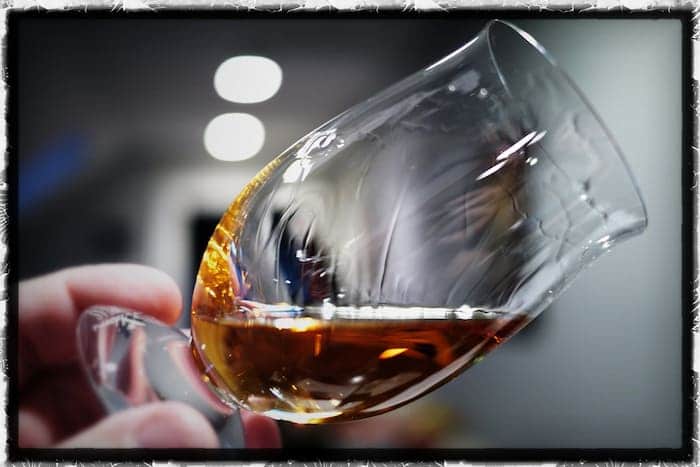If you read enough whiskey reviews—and you’re here, so presumably, you do—sooner or later you’ll come across references to chemicals called tannins. You probably know that they have an effect on whiskey’s color and texture. But exactly what are they, what exactly do they do to whiskey, and how do they get there?
Broadly, tannins a set of naturally-occurring chemicals that bind to proteins and certain other organic compounds (fun fact: tanning—turning raw animal hides into leather—gets its name from tannins, which are used in certain versions of the process). On a more practical level, they’re substances found in a variety of food and drinks that add astringency—that puckery, dried-out sensation you get from a dry red wine or a cup of over-steeped black tea—and they play an important role in the whiskey aging process.

Tannins are found in a multitude of plant species, including many that we eat and drink. Beyond black tea and red wine, which gets most of its tannins from grape skins, tannins are also found in high levels in some of the more difficult, old-timey fruits, like quince and persimmons, as well as in acorns—which is why you wouldn’t want to eat them without a thorough rinse.
Acorns, of course, come from oak trees, and oak, in barrel form, is where tannins come into play with whiskey. One characteristic they contribute is obvious: they add astringency, which we might also describe as “dryness” when tasting whiskey. They also affect a whiskey’s color.
But the impact of tannins goes deeper. Besides affecting mouthfeel and appearance, they also come into play in developing a spirit’s flavor profile as it’s maturing. For starters, tannins help remove unpleasant sulphury notes. They also aid in the breakdown of lignins, another class of organic chemicals present in oak that help lend rigidity to wood. More important, for our purposes, as lignins break down during whiskey aging, they transform into aromatic compounds that add vanilla, smoke, spice, and floral notes, among others, to the final spirit.
The chemistry might be complicated, but one thing isn’t: without tannins, we’d all be drinking white dog.



